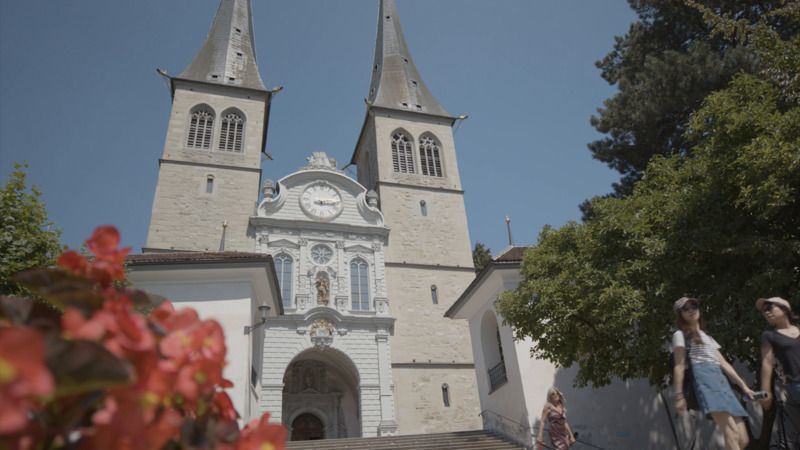Considered the most important example of church building from the Renaissance period in Switzerland, the Church of St. Leodegar – also known as the Hofkirche – is the parish church of Lucerne. The history of this impressive building is long and eventful.
Church of St. Leodegar
Around 735/736, Southern Alemanni noblemen founded a small monastery on the site now occupied by the church precincts. Around 1135, the self-governing monastery became a dependent priory of Murbach in Alsace. Changing fortunes obliged Murbach Abbey in 1291 to sell the priory in Lucerne and all its properties to the Habsburgs. After Lucerne joined the Old Confederacy in 1332, the town of Lucerne began appropriating the rights of the Habsburgs – including those over the monastery – in a process that continued until 1433. The Benedictine monastery became a collegiate church in 1455/56. Since then, the college of canons (non-monastic community of clergy) has recited the Divine Office every morning and evening.
Church treasure
The treasury of the Hofkirche houses one of the oldest and most important sacred treasures in Switzerland. The large vestibule cross and a silver missal cover date from the 12th/15th century. Another masterful example of medieval goldsmithing is a chalice from the Burgundian booty of the Confederates, captured in the Battle of Murten in 1476. The majority of the treasures, however, date from the 17th and 18th centuries, i.e. from the period after the rebuilding of the collegiate church following the fire of 1633. In addition to numerous chalices, elaborately crafted reliquaries and silk-embroidered chasubles, there are also five almost life-size silver reliquary busts. The painting of the treasury room from 1933 in the Art Deco style is unique in Switzerland. The church treasury can only be visited on a guided tour.
Organ
The imposing organ was built in 1640 and extended in 1862, before being modified, restored and enlarged between 1972 and 1977. The organ prospectus of 1640 records it as having the tallest (10.7 m) and heaviest (383 kg) pipe in the world at the time. Overall, the organ weighs an incredible 30 tonnes. The 7,374 pipes are distributed across 111 registers. The Echo division inaugurated in 2015 has witnessed the inclusion of some new pipes and, most importantly, the reintroduction into the organ of the best preserved pipes dating back more than 150 years. The Echo division is thus performing not only a musical task, but also fulfilling a mission in terms of preserving a valuable ancient monument in the most appropriate manner.
Storm fantasy
The «rain machine» consists of a pneumatically driven rotating wooden drum containing metal balls, which are designed to cascade over chicanes incorporated into the metal lining of the drum. This legendary device has left audiences both awestruck and disquieted since 1862.
Discover the city of Lucerne




![[Translate to Englisch:] Gästekarte Luzern Gästekarte Luzern](https://www.luzern.com/fileadmin/_processed_/6/4/csm_SGV_2017_aa603a6780.jpg)












